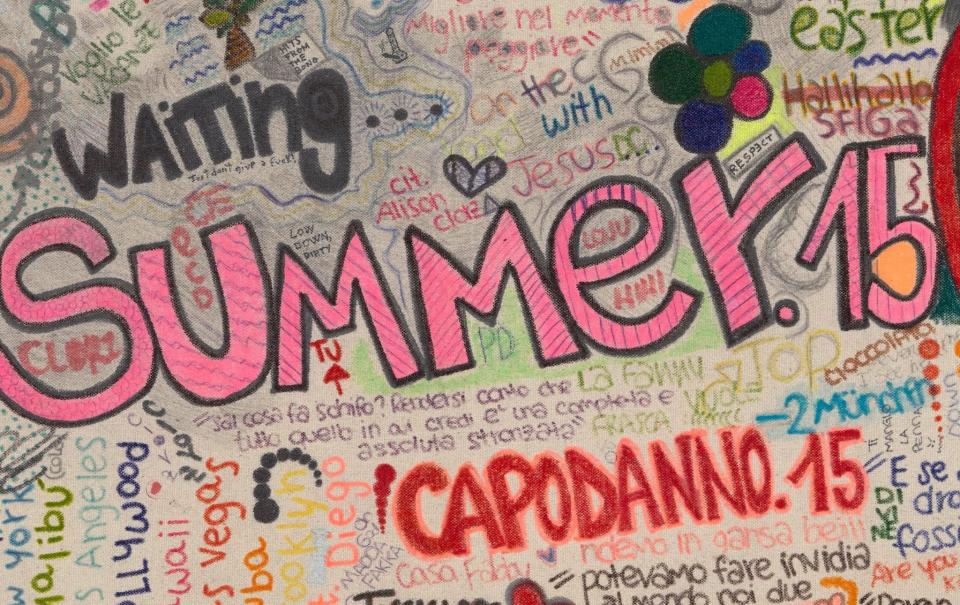How Oscar Murillo (and 100,000 kids) created the summer's weirdest art exhibition

Since the turn of the century, public art projects have been all about scale, from Antony Gormley’s giant Angel of the North to Anish Kapoor’s vast, trumpet-like Dismemberment, which dominates rolling farm slopes in New Zealand. Scale in a different sense was important to Steve McQueen’s Year 3 Project, in which every pupil in that age group in London was invited to sit for a class photograph in 2018. And it is key to Oscar Murillo’s Frequencies, which opened this week at his old secondary school in Hackney, bringing together more than 40,000 canvases created by 100,000 children from 350 schools in 34 countries around the world. You won’t, it’s fair to say, have time to look at them all.
They have been collected over a 8-year period. The children were aged from 10 to 16; the canvases covered their desks for six months, and they were encouraged to commit to the cloth whatever they felt like drawing, writing or painting. No materials were provided with which to make marks: some of the children evidently had only one or two colours to choose from; most had an array of felt-tips and biros at their fingertips.
Murillo, who was born in Colombia and grew up in London from the age of 10, tells me he was looking for a depth of interaction with place, that he “would have to be born thousands of times to have”. Offering a “visual recording device” to an age group in the process of being indoctrinated into a social system, he says, provides the opportunity to capture them before those filters are in place.
The results are fascinating. Names, hearts and dragons figure globally. Pledges of love are made and crossed out, pictograms form amid scribbled chaos. A sinister orange octopus occupies a quadrant of one canvas in a glass vitrine, with “I hate my life” written on every tentacle. English is visibly a lingua franca. Some of the canvases themselves take on the cast of the environment in which they were placed. Red dirt stains those from Ghana, a grey mud colour seeps into others from Mumbai.
National characteristics emerge: pop culture infuses the canvases from Japan; Murillo identifies an anarchic energy in those from Chile and Argentina. Yet the Chinese canvases are perhaps the most distinctive. Large parts of them remain untouched, with images confined to one or more corners, their clean lines evidence of a calligraphic tradition. Are the children more disciplined – or afraid to splurge their inner lives out in a mess of lines, words and symbols? It’s hard to know, although the director of the Frequencies Foundation, Clara Dublanc, says there is a plan for academics to study the canvases as a whole.

Murillo, who was joint winner of the Turner Prize in 2019, the year in which the nominated artists voted to share the award, has curated a selection of cropped and digitised images, projected on to a screen. He’s also showing a series of works, Disrupted Frequencies, in which he has energetically painted over large panels of individual stitched-together canvases with hues of blue. This seemingly violent act underlines what an interesting, unexpected artist Murillo is, although strangely it can’t arrest attention from the work of the children themselves. This is surely one of the most unusual shows of the summer.
Frequencies, Oscar Murillo (presented by Artangel) is at Cardinal Pole Catholic School, London E9, until 30 August

 money
money 